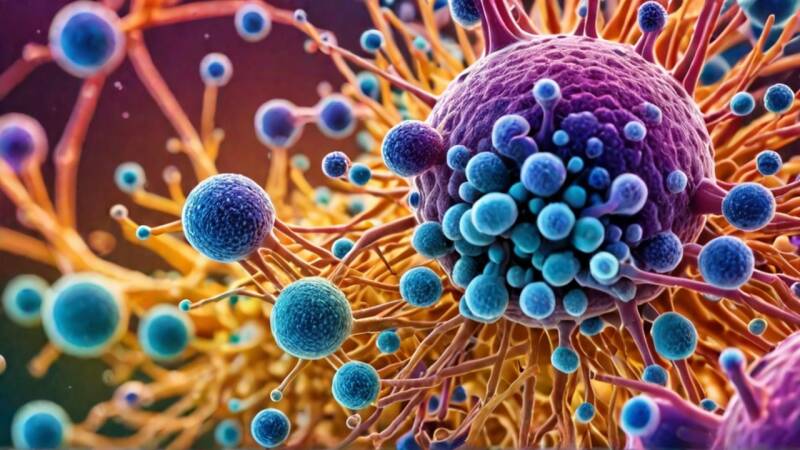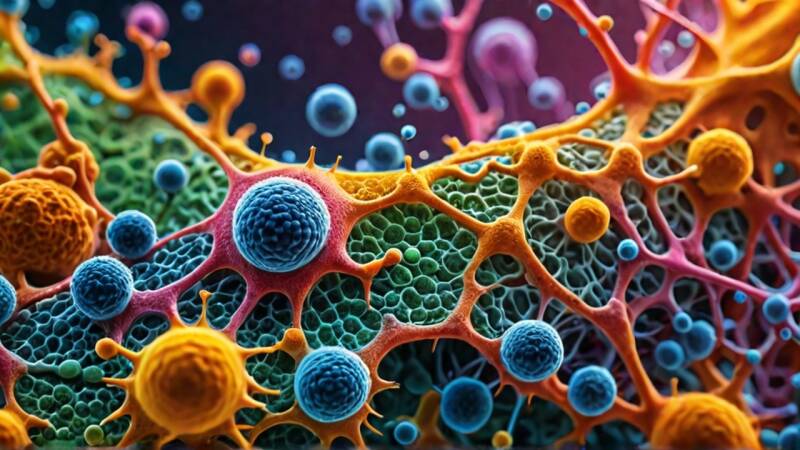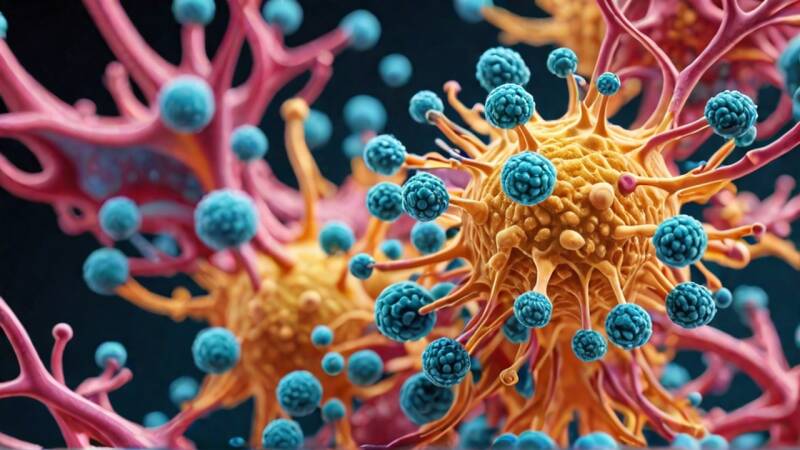Enzyme Nutrition: The Missing Key to Health and Longevity
Good health depends on more than just calories, protein, vitamins, and minerals. One of the most overlooked—but absolutely essential—parts of nutrition is enzymes. Enzymes are the “spark plugs” of life, making every action in the body possible, from digesting food to repairing tissues and supporting immunity.
Imagine a bustling construction site where truckloads of bricks, steel, and lumber (your vitamins, minerals, and nutrients) are delivered every day. The supplies keep piling up, but without workers, the site stays silent—nothing gets built. Then, the construction crew arrives: the live enzymes. With hard hats on, they lift, connect, and assemble the raw materials into strong walls, sturdy beams, and livable spaces. The materials alone couldn’t form a building, but with the enzymes directing and energizing the work, the blueprint of life takes shape. Without the enzymes, the site would remain an abandoned lot, no matter how many supplies are available.
Understanding how enzymes work and how to protect them can transform your health, energy, and longevity.
What Are Enzymes?
Enzymes are proteins that act as catalysts, speeding up chemical reactions inside the body. Without enzymes, life would stop instantly.
There are three main categories:
Digestive Enzymes – break down food into usable nutrients.
Metabolic Enzymes – keep the body’s systems running, from circulation to detoxification.
Food Enzymes – naturally present in raw foods, helping your body digest them without using as much of its own enzyme supply.
The Concept of Enzyme Potential
Each person is born with a limited supply of enzymatic energy, often referred to as the enzyme potential. Think of it as a savings account—you want to preserve it as much as possible.
Eating cooked and processed foods forces your body to spend more of its own enzymes.
Eating raw, enzyme-rich foods allows your body to conserve its supply.
When your enzyme reserves are protected, your body has more energy for repair, defense, and healing.
The Power of Food Enzymes
Raw foods contain the enzymes required for their digestion. For example:
Pineapple contains bromelain, which helps digest protein.
Papaya contains papain, another protein-digesting enzyme.
Fresh vegetables, sprouts, fruits, and seeds are rich in natural enzymes.
Cooking destroys these enzymes, leaving your body to do all the work on its own. Over time, this constant demand can weaken your enzyme reserves and accelerate aging.
Raw vs. Cooked Foods:
Raw Foods
Naturally rich in living enzymes.
Assist in digesting themselves, reducing the body’s workload.
Preserve more vitamins, minerals, and phytonutrients.
Conserve the body’s enzyme potential.
Support vitality, repair, and long-term health.
Cooked/Processed Foods
Enzymes destroyed by heat and processing.
Require the body to supply all digestive enzymes.
Lose some valuable nutrients during cooking.
Use up more of the body’s enzyme reserves.
May accelerate aging and contribute to imbalance.
Enzymes, Aging, and Disease
A growing body of evidence suggests that enzyme depletion is linked to premature aging and chronic disease. When the body has to use most of its enzymatic energy for digestion, less is available for repair, detoxification, and immune defense.
Supporting enzyme health may:
Improve digestion and reduce discomfort
Enhance energy and vitality
Strengthen immunity
Support detoxification
Slow down the aging process
How to Support Your Enzyme Potential
Here are practical ways you can protect and restore your enzyme reserves:
1. Eat Raw Foods Daily
Adding fresh fruits, vegetables, sprouts, or seeds to meals helps ease digestion and supplies living enzymes.
2. Chew Thoroughly
Digestion begins in the mouth. Chewing well allows enzymes in saliva to start breaking food down before it reaches the stomach.
3. Consider Digestive Enzyme Support
If your diet is mostly cooked or you struggle with digestive discomfort, plant-based enzyme supplements can give valuable assistance.
4. Avoid Enzyme Robbers
Overeating, heavily processed foods, and alcohol all place heavy demands on your enzyme reserves. Balanced, moderate meals protect your potential.
5. Give Digestion a Rest
Spacing meals apart or practicing gentle fasting allows your body to redirect enzyme energy from digestion to healing and repair.
The Takeaway
Enzymes are not just helpful—they are essential. They are the foundation of every life process, and your health depends on protecting your enzyme potential.
By making small daily changes—such as eating more raw foods, chewing well, and reducing processed foods—you can:
Improve nutrient absorption
Boost your energy
Strengthen your immune system
Protect against premature aging
Live in greater harmony with your body’s natural design
"Enzyme nutrition is simple, practical, and profoundly powerful. It’s not about a strict diet, but about choices that help your body do what it was created to do: heal, restore, and thrive."
The Live Enzyme Potential of Raw Honey, Avocado, and Bananas🍯🥑🍌
Clinical Insights into Nature’s Living Intelligence
In holistic and enzyme-based nutrition, few natural foods embody the living intelligence of nature as profoundly as raw honey, avocado, and bananas. Each contains a unique enzymatic signature—a dynamic, self-regulating biochemical system designed to sustain life, promote repair, and optimize human physiology when consumed in their raw form.
🧬 The Foundation of Enzyme Nutrition
Enzymes are the spark of life. They convert potential energy from food into usable biological power, orchestrating every metabolic, digestive, and regenerative function in the body.
When food is cooked or processed, its enzyme potential is destroyed, forcing the body to deplete its own reserves to maintain basic function.
Raw foods, however, arrive complete—with enzymes intact—working synergistically with human physiology to conserve energy and direct it toward healing, immunity, and longevity.
“Raw foods are nature’s living medicine, carrying the code of self-restoration.”
🍯 Raw Honey: Nature’s Liquid Intelligence
Raw honey is far more than a natural sweetener—it is a living enzymatic matrix rich in over 5,000 bioactive compounds.
Key enzymes include:
Glucose oxidase – produces natural hydrogen peroxide, acting as an antimicrobial and cellular oxygenator.
Diastase – breaks down starches into simple sugars for effortless energy conversion.
Invertase – transforms sucrose into glucose and fructose, easing pancreatic demand.
These enzymes maintain raw honey’s stability, antimicrobial potency, and bioelectrical vitality, supporting tissue repair, microbiome balance, and rapid energy metabolism.
⚠️ Note: Processed or pasteurized honey loses its enzymatic life force, becoming chemically stable but biologically inert.
🥑 Avocado: The Enzyme-Rich Lipid Fruit
Avocados are a clinical marvel in functional nutrition, abundant in lipase—the enzyme essential for fat digestion and absorption.
Raw avocado delivers fats in a pre-digested, bioavailable form that supports:
Efficient assimilation of fat-soluble vitamins (A, D, E, K)
Healthy liver and gallbladder function
Restoration of cell membrane integrity
Co-factors such as magnesium, glutathione, and chlorophyll enhance mitochondrial energy and detoxification. Clinically, avocado acts as a metabolic lubricant, reducing inflammation and supporting cellular communication.
“Avocado is the body’s enzymatic bridge between energy and repair.”
🍌 Bananas: Nature’s Digestive Catalyst
When ripe, bananas teem with amylase, maltase, and invertase, enzymes that convert complex carbohydrates into glucose for instant cellular energy.
They also contain prebiotic fibers that feed beneficial gut bacteria, fostering serotonin synthesis and supporting the gut-brain connection—a central pillar in holistic health.
"From an enzyme nutrition perspective, bananas serve as a digestive harmonizer, easing pancreatic workload and promoting mood balance through optimal nutrient assimilation."
⚖️ Clinical Integration: Enzymatic Resonance and Vital Force
From a clinical standpoint, these three foods represent enzyme-resonant nutrition—living substances that vibrate in harmony with human biochemistry.
When consumed raw, they provide exogenous enzymes that allow the body to conserve metabolic energy, accelerating restoration and repair.
They are not merely sources of nutrients; they are living systems of energy transfer, bridging the intelligence of the natural world with the regenerative capacity of the human body.
🌿 Conclusion: Life Supports Life
The live enzyme potential of raw honey, avocado, and bananas reveals a timeless principle: life sustains life.
When food is consumed in its original, uncooked state, it retains its energetic blueprint—its living code of restoration.
These foods are not simply nourishment; they are teachers of biological harmony, reminding us that the closer we align with nature’s design, the more effortlessly healing unfolds.
“The wisdom of life resides not in what we create—but in what we preserve.”



